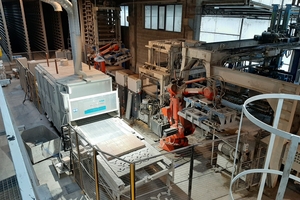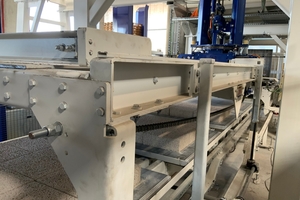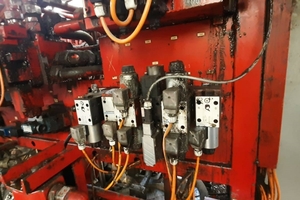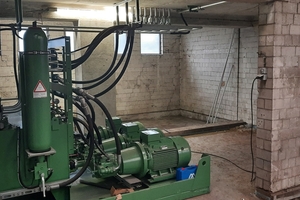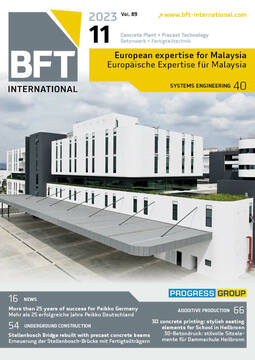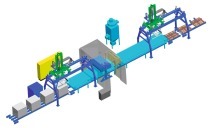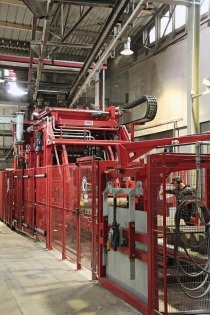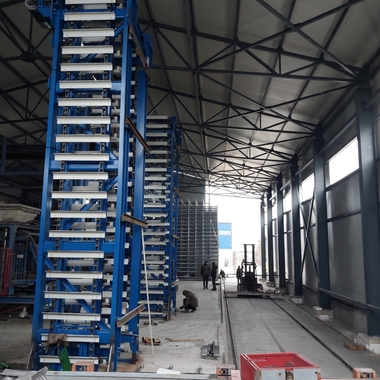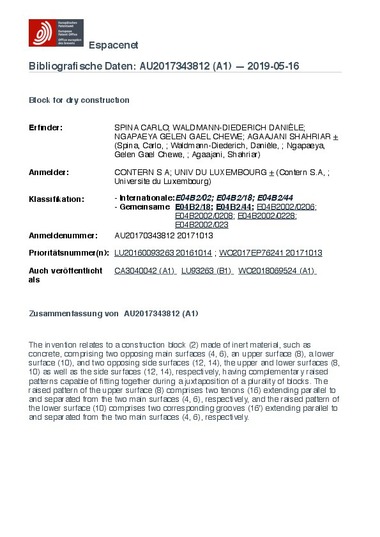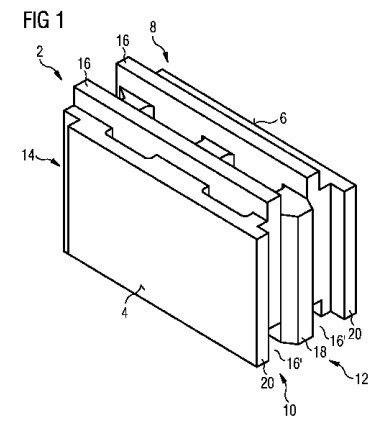Successful modernizations of concrete block plants in
Italy and Germany
Replacing a dry side at Favaro1 in Italy: the old dry side was driven hydraulically and, equipped with two robots, operated an ageing system integrated into the plant. According to the company owner, Mr. Favaro, the robots require extensive maintenance. Specially trained staff is needed to operate the robots in order to adapt them to each individual product. The task here was to build a dry side that does not include robots but can still operate the ageing system. In addition, Mr. Favaro preferred only electric drives.
Another challenge was that Industry 4.0 was to be installed in the plant. The relevant production data is imprinted on the block during production and then tracks it to the finished package. This enables tracking of each step. Production is predetermined by the office and then transferred to the production facility by means of a code. At the end, a label is attached to the product on the finished pallet. Feeding of the ageing system was realized by means of a mobile Frima block remover with servo clamp, which acts as a standard block remover in normal production. This merely requires opening or closing the respective protection zones. After completion of the ageing process, the blocks are removed by a servo block-setting machine which, in this specific case, can move to four different positions.
Another distinctive feature of the dry side is the sliding table, which turns layers that are not suitable for packaging into manageable formats. Due to lack of space, the table had to be electrically adjustable in height so that, when not in use, the blocks can pass under it.
Modification of the hydraulic system at Rohloff in Bodenwerder
In this German project, the task and challenge for plant manufacturer Frima was to install a new high-performance, future-proof overall hydraulic system on an old machine built by a third-party manufacturer without any functional restrictions. The new hydraulic system was to be designed so that it can continue to be used when the machine is replaced. The old hydraulic system was outdated, and it was becoming increasingly difficult and expensive to obtain replacement parts. Many parts were no longer available at all. The company owner, Mark Rohloff, therefore decided to install a new hydraulic system. Previously, there were small hydraulic units in different places, supplying the various components with oil and pressure. These were replaced by a central overall hydraulic system that was housed in an external room with an external cooling unit. This contributes to significantly reducing noise levels in the production building. The old system of pipes and hoses was dismantled and replaced by a new system. Care was taken to ensure that most of the components can continue to be used when replacing the machine. Pumps and valves of the latest generation were installed.
The valves are seated on a special carrier from which they serve the individual loads via flexible hoses. After restarting the machine, the cycle time has decreased by 5 seconds without changing the settings. The machine has thus become much more efficient as a result of the modification. In addition, energy consumption has dropped significantly because pumps with feedback control are in use.

